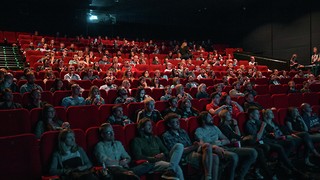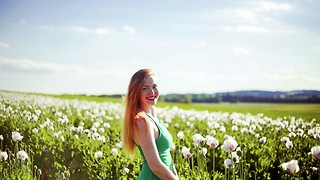Samuel Beckett in dialogue with King’s College Chapel
Sarah Collins was not entirely convinced by this eccentric performance, but still found the experience thought-provoking and innovative

Something out there where in King’s College Chapel was not my first brush with Beckett. The infamous modernist playwright is not on the reading list of a second-year law student, but thanks to a theatre-loving friend of mine, I found myself sitting in a Beckett production at the Edinburgh Fringe last summer. Blind-folded in a darkened room with strange actors brushing my arms and high-pitched wailing filling the room, I became extremely claustrophobic, had a panic attack, and ran out of the theatre. It’s fair to say that Beckett and I started on a difficult footing, and so it was with growing apprehension that I walked into the pitch black of King’s College Chapel for the performance on Monday evening.
With his circular prose and lack of plot, I always felt that Samuel Beckett had successfully capitalised on an ‘emperor’s new clothes’ phenomenon, hailed as the great playwright of the twentieth century for being too complex for anyone without a PhD to understand. I had found his work to lack the accessible emotional depth of great art. Beckett was to me a perfect example of the sometimes artificial hierarchy of the academic study of literature – critics sound clever by saying that his work is amazing because it is so abstract that philistines like I could never understand it.
I’m not sure how far Something out there where has changed my opinion of the work of Beckett, and as chants of random words echoed round the walls of King’s College Chapel, I could not help but feel that the magnificent piece of gothic architecture was the real artwork. However, as an experience Something out there where surprised me. It was thought-provoking, it was interesting, and it was an hour of my life that I’m strangely glad I spent sat in the centre of the chapel with the odd, sinister sounds of water dripping, rambling speech and occasionally inspired music bellowing around me.
We were led with torches to our seats, and at 8 pm began a series of audiovisual displays, inspired by Beckett’s work. The displays were not simply representations of Beckett plays: they instead aimed to illustrate a conversation between the chapel and the literature. The dissonance between the controlled intricacy of the stained glass windows and the raw despair of Beckett’s imagery made the conversation varied and complex. The lighting and photography around the chapel resulted in an incredible interaction between the projected images and the walls, so that the images moulded with and adapted to the structure of the stonework. This gave the series a sense of evolution: what first appeared to be a simple projected image was rendered new by the backdrop. The atmosphere created by the soaring ceilings and the sinister voices that read Beckett’s words was one that I doubt I will ever get to experience again. Hearing of desolation and emptiness in a place of such ornate beauty was a provocative contrast, and one which forced the audience to question how art relates to and represents the human experience.
Number 8 of the series of ‘steps’ was my favourite, with part of Beckett’s video piece Quad forming the centrepiece of the section. It was haunting. Other parts of the series were just plain bizarre; lowlights including an extremely monotonous chant and the incomprehensible speech that the performance opened with. That’s not to mention the projections of strange heads that just seemed to gargle.
I came to Something out there where with a mind full of Land Law and a complex the size of Jupiter about the growing to-do list that I have lost somewhere in my room. Beckett will never be first on my reading list, but I undeniably left a happier student – an hour to think, reflect and question without a supervisor or deadlines is precious. Admiring such architecture, spectacularly illuminated, reminded me that there is something more to life than internships and grad schemes, and Beckett’s quirky and thought-provoking imagery removed me from the bubble of college gossip and the house Whatsapp chat.
The performance did not provoke the emotional catharsis of a Shakespearean tragedy, or even of a really great Chuck and Blair love scene in Gossip Girl, but the performance in the darkened chapel was evocative and inventive. Maybe Beckett isn’t so bad after all.
 News / Tompkins Table 2025: Trinity widens gap on Christ’s19 August 2025
News / Tompkins Table 2025: Trinity widens gap on Christ’s19 August 2025 Comment / A plague on your new-build houses18 August 2025
Comment / A plague on your new-build houses18 August 2025 News / Trinity sells O2 Arena lease for £90m12 August 2025
News / Trinity sells O2 Arena lease for £90m12 August 2025 News / Pro-Palestine activists spray-paint Barclays Eagle Labs18 August 2025
News / Pro-Palestine activists spray-paint Barclays Eagle Labs18 August 2025 News / Uni welcomes new students14 August 2025
News / Uni welcomes new students14 August 2025









